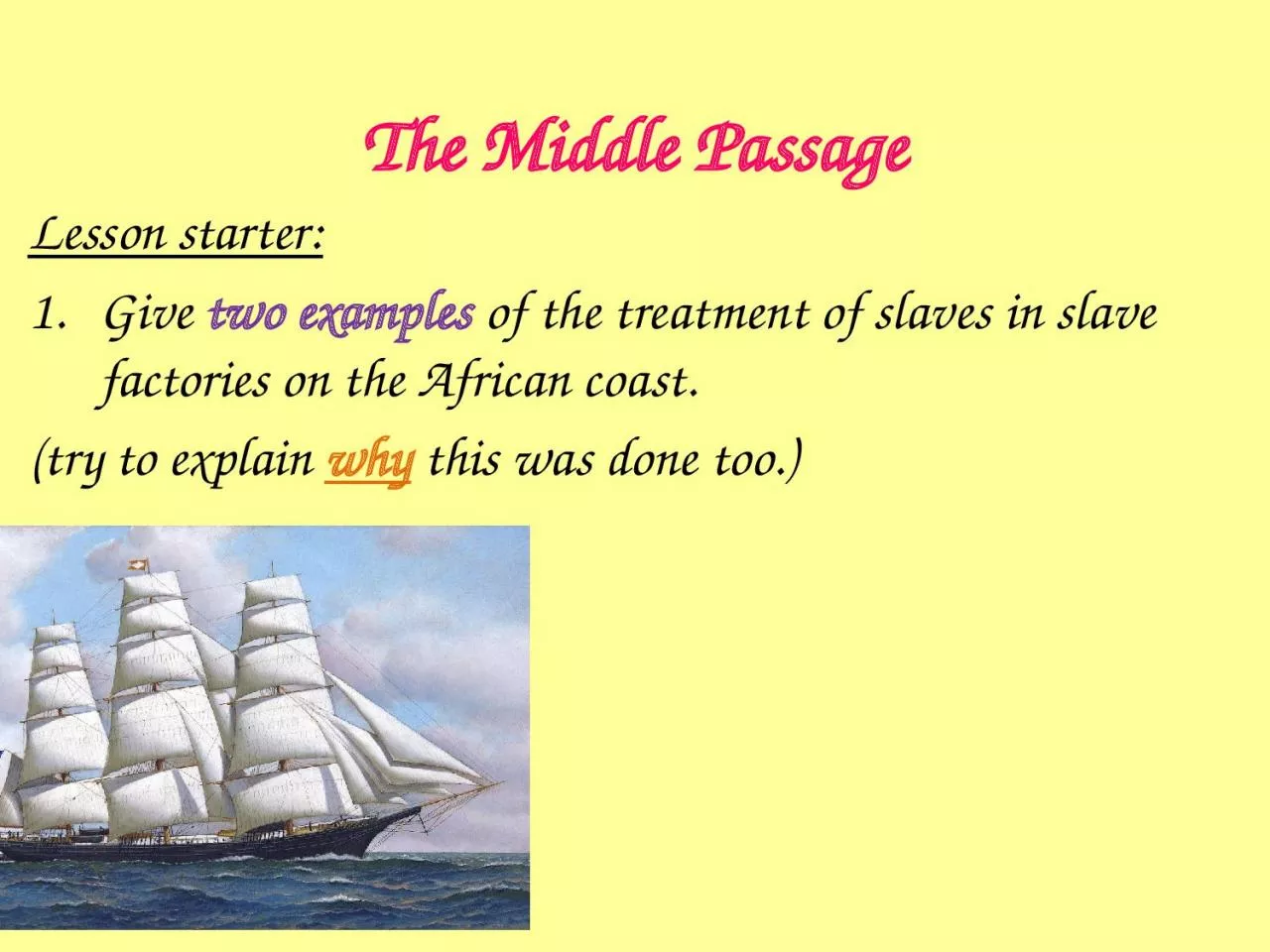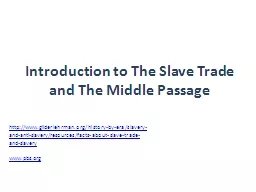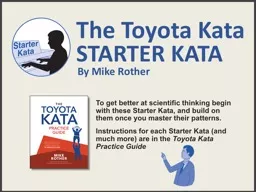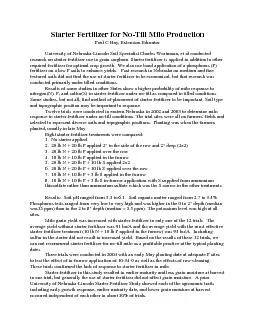PPT-The Middle Passage Lesson starter:
Author : oconnor | Published Date : 2024-02-09
Give two examples of the treatment of slaves in slave factories on the African coast try to explain why this was done too We are learning to Describe the conditions
Presentation Embed Code
Download Presentation
Download Presentation The PPT/PDF document "The Middle Passage Lesson starter:" is the property of its rightful owner. Permission is granted to download and print the materials on this website for personal, non-commercial use only, and to display it on your personal computer provided you do not modify the materials and that you retain all copyright notices contained in the materials. By downloading content from our website, you accept the terms of this agreement.
The Middle Passage Lesson starter:: Transcript
Download Rules Of Document
"The Middle Passage Lesson starter:"The content belongs to its owner. You may download and print it for personal use, without modification, and keep all copyright notices. By downloading, you agree to these terms.
Related Documents














